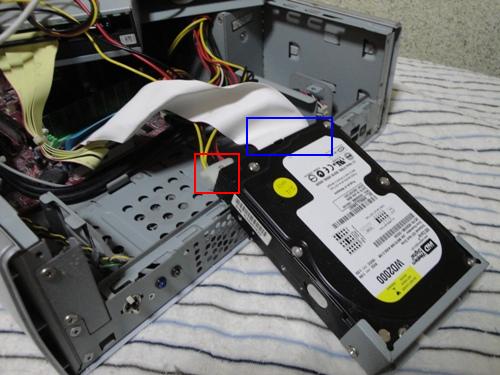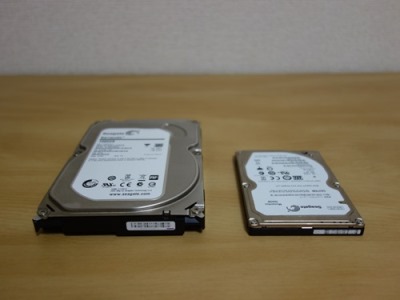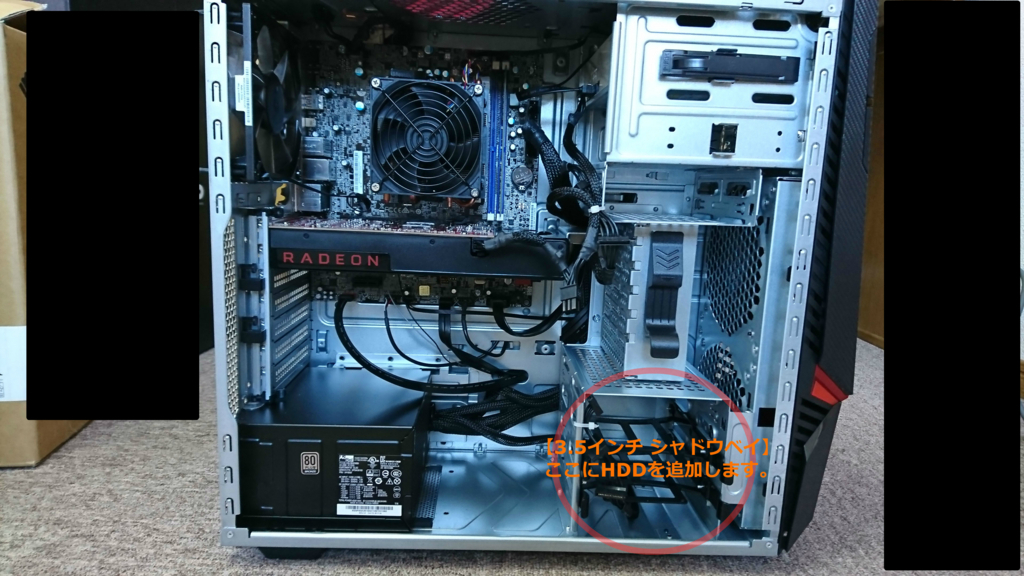Whether you’re building a desktop PC for the first time or upgrading your storage space to something better, installing a new hard drive can prove to be a daunting task for some. Although most users install SSDs in their PCs these days, hard disk drives (HDDs) remain one of the most popular storage devices for users looking for high capacity at an affordable price. So today we will guide you through the process of installing a hard drive on your PC in easy steps. The process is simple: mount your HDD, connect the cables, and format the drive for use with your computer. Keep reading as we walk you through these steps one by one. Learn how to install a HDD in your PC. 
Things to remember before installing a hard drive

Choose the right form factor
Internal hard disk drives (HDDs) are designed for internal use in desktops and come in two form factors. You can get 2.5-inch HDDs like the Seagate BarraCuda or 3.5-inch HDDs like this popular WD Blue drive. Thickness varies depending on the model of hard drive you purchase. For smaller ITX builds, a 2.5-inch HDD is the best choice. Internal HDDs in laptops are also usually of the 2.5-inch variety. However, for most people, we recommend purchasing a modern 3.5-inch HDD with 7200rpm.
Note : In 2022, do not use your hard drive as the main boot partition for Windows. Using modern OS such as Windows 10/11 on your hard drive tends to result in a less-optimized experience. UI, when opening the app, everything feels slow and unbearable. Instead, check out the best NVMe and SATA SSDs you can consider in 2023. 
Gather the necessary tools
First, you’ll need a Phillips screwdriver to install the drive into the hard disk bay. Your workplace must be clean and you must be grounded before touching any PC components. Anti-static bracelets are a great tool to avoid damage from static electricity. This guide requires a SATA cable, a SATA power connector (included with the power supply), and the HDD mounting screws provided with the case. 
How to install a hard drive in a desktop PC
Step 1: Open the side panel of your PC case
First, you need to open all the side panels of the case and set them aside so you can access the motherboard. This guide assumes that your PC already has a power supply unit (PSU) and motherboard and its various components installed. You will need to use a Phillips screwdriver for this. You will also need it when installing the hard drive into your PC case.
Step 2: Locate the hard drive mount
Next, locate the 3.5-inch drive installation bay inside your PC case . Cases, including ours, often come with tool-less bays for easy installation. However, in some cases you may need to screw a drive into a drive bay. Once you have located the hard drive, place it in the bay and begin tightening the screws using a Phillips screwdriver and the relevant drive mounting screws provided with your PC case.
This installation didn’t require any screws; I simply placed the HDD inside the 3.5-inch drive day using a nubbin that fits into the screw hole. The hard drive itself is securely held in place within the dedicated drive bay of the Cooler Master ATX case.
Note : If you have a 2.5-inch HDD, simply install it in the 2.5-inch drive mounting location of your PC case instead of the 3.5-inch HDD in this step. The other steps in this tutorial are the same .
Step 3: Connect the SATA cable to the hard drive
Next, connect one end of the SATA cable to the HDD. You’ll notice that the SATA port and the cable itself have notches and are aligned in a certain direction. Also, follow the power cable to find the SATA power connector. Next, route the cable towards the drive bay of the case and plug the SATA power connector into the hard drive.
Step 4: Plug the SATA cable into the motherboard
Next, find the SATA port on your motherboard and plug in the other end of the SATA cable . Consult your motherboard manual if you need help finding ports. If you have a large graphics card installed, the ports are usually located around the PCI-e slot area where you connect the GPU, making it very difficult to connect the SATA cable. Therefore, you may need to uninstall your graphics card if necessary.
Installation on the hard disk is complete. Proceed to the next section to prepare your new storage device for use.
Step 5: Check if the HDD is installed correctly
Boot your PC and enter BIOS setup . For most motherboards, the key to enter the BIOS is F2 or Delete . Please refer to this guide on how to enter the BIOS. The POST screen that appears when you first start your PC also displays a list of keys to press to enter the BIOS.
You should see your newly installed HDD under Storage Information or another similar term (BIOS specific). The model number and capacity will be listed here. Then just format it in the next step and you will be able to save your data.
Step 6: Format the hard disk for first use
Typically, when you install a new hard drive, Windows 10/11 will ask you to format the storage device before using it. When you start the Windows OS, a pop-up will appear asking you to format the drive . Continue with the formatting process and the drive will appear under “My PC” in File Explorer.
In the rare case that the pop-up does not appear, please follow these steps to make your hard drive usable. Press the Windows key and type ” create and format hard disk partitions ” in the top search bar. Click on the utility in the search results and the new drive will appear at the bottom. In this case, it should appear as ” Unallocated Space “. Right-click on the drive and select the “New Volume” option. Then follow the wizard steps to format the drive. Refer to this guide for detailed instructions on how to format your drive using Disk Management Utility. It also includes other alternative methods for formatting storage devices.
That’s pretty much everything you need to know about installing a hard drive in your PC. By following the steps mentioned in the guide, you will be able to save data on your HDD. There are a few things to keep in mind, but installation mainly involves installing the hard drive and connecting cables. It wasn’t too difficult, was it? To manage partitions within your HDD, refer to this guide on the best partition software to use. Several free utilities are also listed. To further expand your storage, purchase one of the best external hard drives listed in this guide. If you have any questions, please comment below. We will help you.
Installing a hard drive is a little more difficult, but it mainly depends on your PC’s case and whether you have the necessary SATA cables and power connectors on hand. Some PC cases are designed with drive mounting locations that are difficult to reach, so installing a hard drive can be especially time-consuming in these cases.
Whether you install another hard drive in your PC depends on the number of SATA ports it has. You can check this in your motherboard manual and be sure to check the number of SATA power connectors available.
HDDs are only suitable for PCs if you need a large amount of storage space. Although SSDs are expensive, they are reliable and don’t break down often. Modern SSDs cost almost twice as much as HDDs of the same capacity, but this difference has become almost negligible over the years.
Most desktop PCs accept both 3.5-inch and 2.5-inch HDDs, but there are probably some small cases and mini PCs that only accept 2.5-inch HDDs. Not all HDDs will fit in every PC, so you’ll need to check your PC case manual to confirm compatibility.





![How to set up a Raspberry Pi web server in 2021 [Guide]](https://i0.wp.com/pcmanabu.com/wp-content/uploads/2019/10/web-server-02-309x198.png?w=1200&resize=1200,0&ssl=1)












































